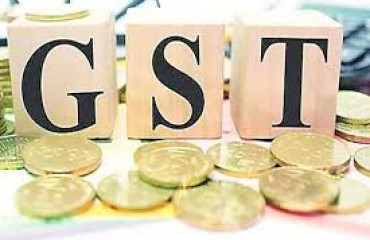
The Union government has increased GST on critical components required for a solar project, such as photovoltaic cells and modules, from 5% to 12% with effect from 1 October 2021
MUMBAI : Solar tariffs may rise to ₹2.6-2.7 per unit (from an all-time low of ₹2 a unit) over the next fiscal in the wake of the recent increase in the goods and services tax (GST) on renewable energy equipment, and the proposed customs duty on imported solar modules.
The government of India has increased GST on critical components of a solar project such as photovoltaic cells and modules from 5% to 12% with effect from 1 October 2021. This has increased the total taxation on a solar project from 8-9% to 12-13%1. It will more than double to 30% when customs duty of 40% on imported solar modules kicks in from 1 April 2022.
Additionally, module prices increased to 23-24 cents per watt in first half of current fiscal from an average 21 cents per watt (for a mono-crystalline module) last fiscal. This was primarily due to significant increase in the polysilicon prices—a key component used in solar cells—because of disruptions at the manufacturing facilities of Chinese manufacturers.
Ankit Hakhu, director, Crisil Ratings, said, "High module prices, taxes and duties are likely to result in project cost inflation for solar developers. Compared with FY21, we expect the project cost to increase by 15-20% ( ₹60 lakh- ₹70 lakh per MW) on average to ₹4.2 crore- ₹4.3 crore per MW next fiscal from ₹3.6 crore- ₹3.7 crore per MW seen during the past few fiscals. This might make future solar bids expensive at ₹2.6-2.7 per unit compared with the lows of ₹2.0-2.2 per unit seen during fiscal 2021, for developers to maintain returns of 11-12%."
On the other hand, developers of already bid-out projects are expected to pass on the impact of taxes and duties under the change-in-law clause.
The above calculation on tariffs includes an anticipated reduction in prices of solar module to 20-21 cents per watt next fiscal, with an expectation of smoothening of silicon prices following the ramp-up in operations of the planned and existing capacities.
In the absence of this correction, tariffs might further increase by 15-20 paise per unit to maintain the said returns.
However, the distribution utilities have been wary in the past to participate in bids above ₹2.5 per unit. For instance, the manufacturing-linked tender of 12 GW which was bid-out in January 2020 at ₹2.9 per unit remained unsigned by the distribution utilities. Only recently in Q2FY22, the tender saw partial acceptance by these utilities and at lower tariffs of ₹2.5 per unit.
Aditya Jhaver, director, Crisil Ratings, said, "An increase in tariffs envisaged in future bids may scare away state distribution companies and add to an already large capacity of ~20 GW that has been bid-out but haven't found a buyer for the electricity. On the other hand, if developers resort to aggressive bidding in a competitive market, it will likely increase the credit risk on new projects as the cash flow cushion may be thinner than earlier."
Thus, the ability to take suitable tariff hikes and approvals under the change in law clause remain key drivers for credit quality of future projects.
Further, while the custom duty will support the cost competitiveness of domestic module manufacturers vis-à-vis imports, no notable module price correction is envisaged from these players over the medium term as it will take some time for the domestic players to ramp-up the capacities along the entire value chain, and lower their operating cost.








